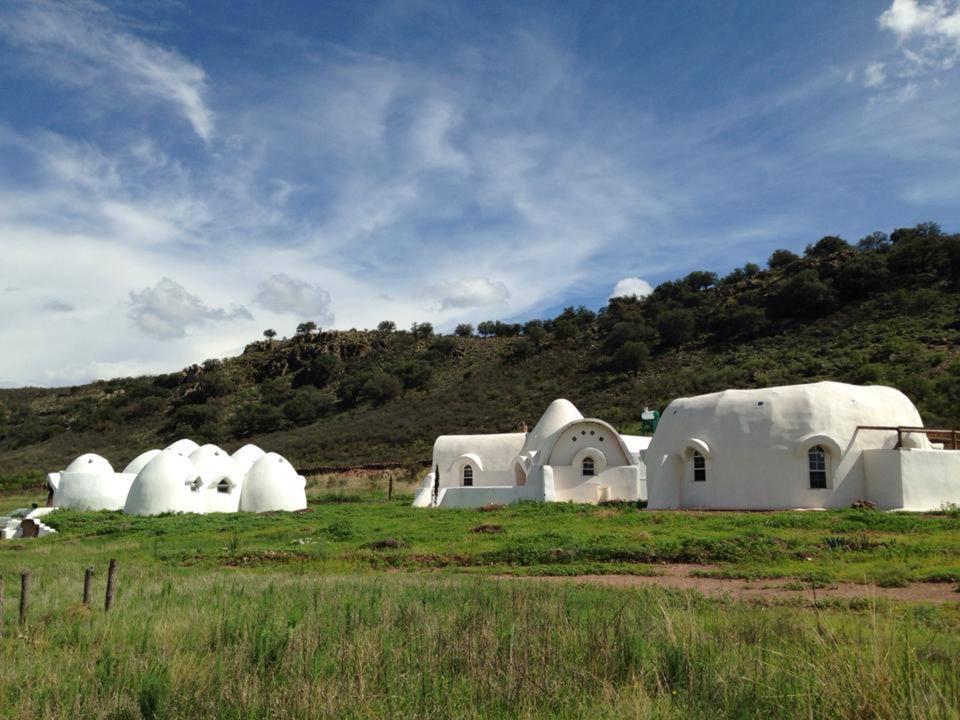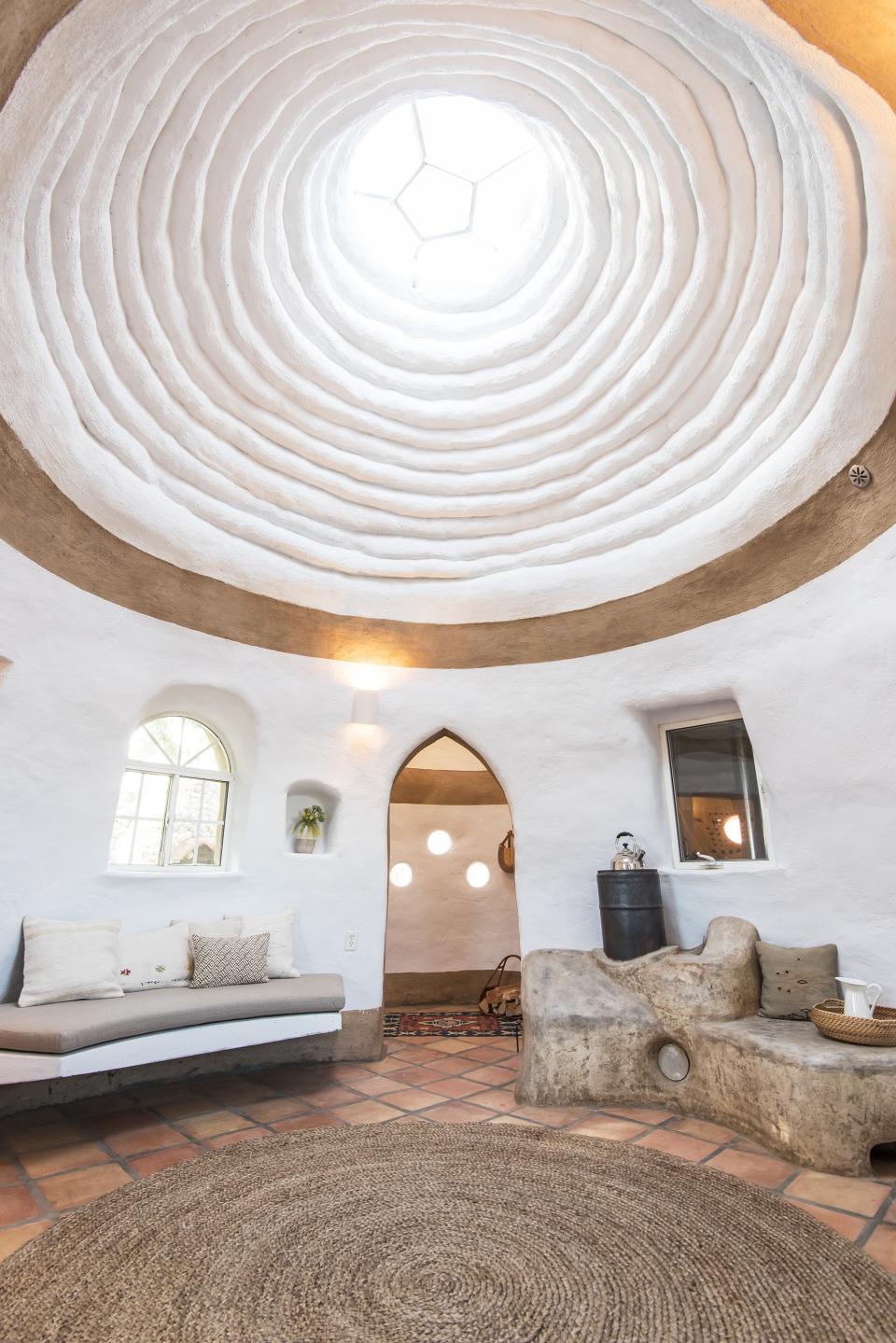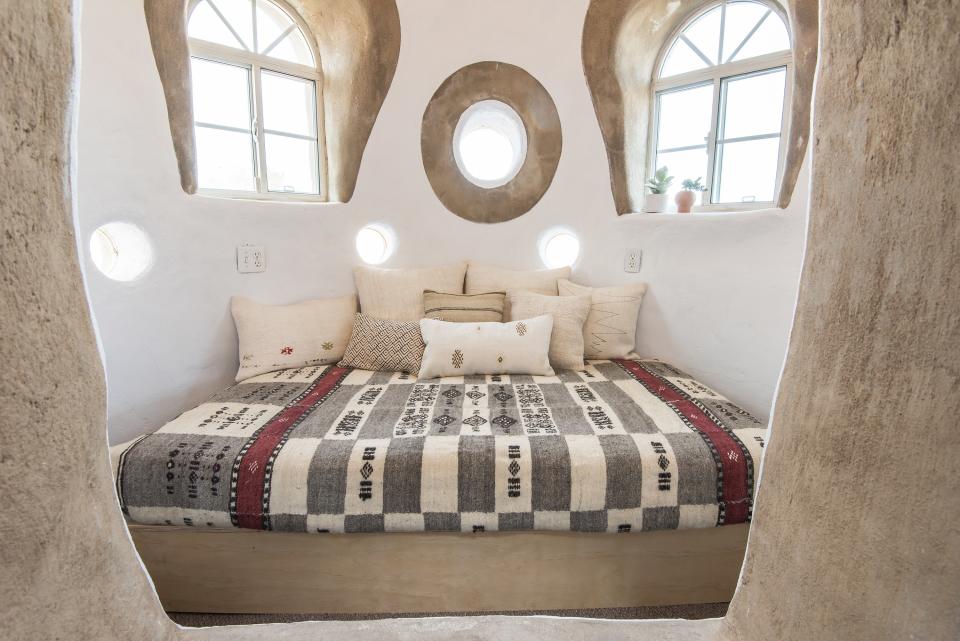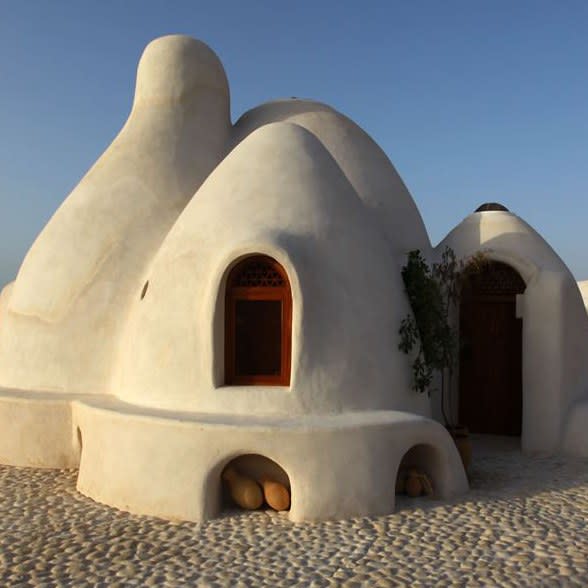Originally Designed for Life on Mars, These Homes Could Redefine Sustainable Architecture
Walking up to the Cal-Earth Institute in Hesperia, California, a set of beehive-style domes seem to be growing out of the earth. At first glance, they bear a resemblance to Pierre Cardin’s Palais Bulles, the site of Dior’s 2016 resort show on the Cote d’Azur, or contemporary sculptures that you would see installed at Art Basel, but, as visually intriguing as they might be, these SuperAdobes have nothing to do with exhibiting modernist aesthetics. Instead, they're about providing sustainable shelter for those who lack adequate housing—a population that has risen to over a billion around the world.
“Forced displacement from war or persecution is one of humanity’s great challenges in the 21st century,” says Kathryn Mahoney, Senior Communications Officer for the UN’s refugee agency. “It’s not about to go away any time soon and those who are affected desperately need our help.”
With its amorphous buildings, Cal-Earth hopes to provide some of that help. The non-profit organization teaches its students (which include philanthropists, curious architects, and builders of varying backgrounds) the art of making SuperAdobes—a method that is intentionally simple, using raw elements and basic architectural principles. In theory, all you need is soil, water, sandbags, barbed wire, and a shovel. Combine these materials with ancient earth-building techniques, and a habitable shelter becomes a reality.

It all began in 1974 when the late Iranian-born architect and founder of Cal-Earth Nader Khalili became determined to find housing solutions for people with no money and limited resources. “When I started this journey, there were over 800 million people in the world who were either refugees, homeless, or were living a few steps away from disaster,” he said in a 2008 interview.
Khalili, who was formerly focused on designing high-rises in Los Angeles and Tehran, spent five years traversing the Iranian desert via motorcycle to learn how indigenous communities lived and built. He found homes that had been constructed using the earth itself, and not a lot else.
That discovery eventually led Khalili to work with NASA, developing concepts for future human settlements on the moon and Mars. He created prototypes that would later become the standard SuperAdobe template. The prospect of migrating to outer space sounds apocalyptic, but Khalili concluded that, if his new form of building were to catch on, humans would at least know how to set up new homes if they were forced into planetary relocation.

“It’s all about using what’s available to you in that situation,” Khalili’s son Dastan, President of Cal-Earth, explains. “When you’re building with natural materials, you’re addressing what may occur in those environments—a storm, a meteorite, whatever it may be—you’re thinking sustainably and using what’s already there.”
Dastan and his sister Sheefteh are devoted to carrying on their father’s vision. “We want to empower the individual to be able to recognize that no matter what happens: war, natural disaster, economic collapse, they will be able to build themselves a home that works in harmony with nature, has a minimal carbon footprint, is fireproof, earthquake-resistant, and hurricane-proof,” Dastan says.

It’s remarkable that such durability is possible without the integration of modern technology, but proof of concept is evident in California, where four SuperAdobes situated in the heart of the recent wildfires remained completely unharmed as many of the surrounding structures were reduced to dust.
Another example of the concept’s resilience is in Nepal, which suffered a devastating earthquake in 2015. “We had a student that built an orphanage using the SuperAdobe principle,” Dastan explains. “It withstood two earthquakes while the entire town around it was leveled; it basically became ground zero for everybody, but the orphanage only had cosmetic damage.”
The SuperAdobe approach seems especially relevant today, as the world is faced with mounting refugee crises and and natural disasters. “Climate change is already making parts of our planet uninhabitable and people are being forced to consider abandoning their homes and communities,” says Dr. Elizabeth Ferris, a Research Professor for International Migration at Georgetown University. “Depending on the extent to which global warming continues, millions more people are likely to find themselves looking for new homes in the next few decades.”

Could SuperAdobes be the solution for sustainable housing in the future? Dastan certainly thinks so. “I think it’s necessary now for life on earth,” he says. He’s not alone: the SuperAdobe technology has been recognized with the prestigious Aga Khan Award for Architecture, along with endorsements from the United Nations and NASA. At a time when modern innovation is so often linked to disruptive digital technologies, SuperAdobes show how ancient techniques can be reimagined to solve critical global issues. Plus, looking up at the cornerless ceiling within one of those carefully swirled domes, you can’t help but feel a sense of peace.


